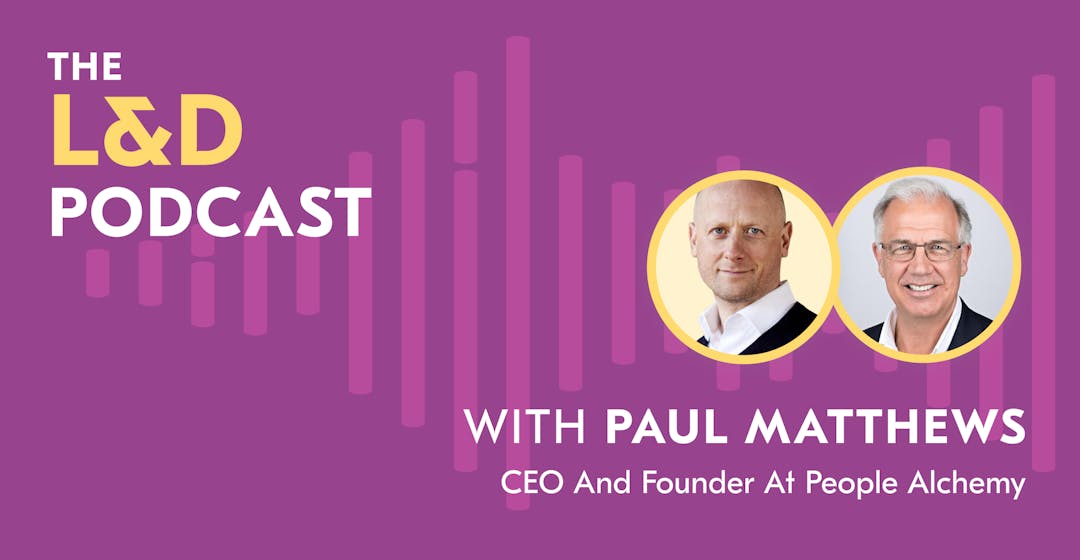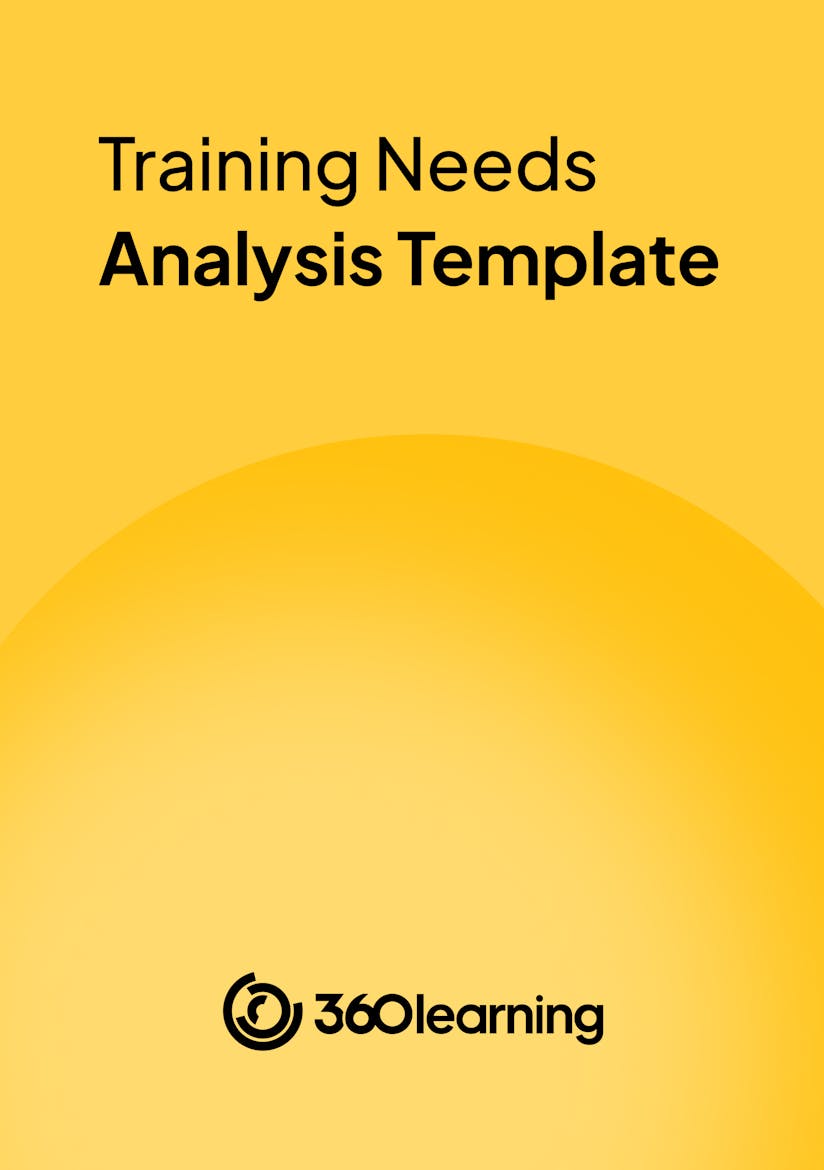
3 Analyses for Designing Impactful Learning Workflows: An Expert Interview With Paul Matthews
For L&D leaders, helping people improve their prospects and role performance to fulfill the expectations of organizations continues to be a priority.
But how can you make an impact to help people carry out their roles effectively and efficiently? And how can you align learning and development so that it makes a measurable difference?
In this podcast recap (check out the full episode here), I speak to Paul Matthews, best-selling author and keynote speaker, who explains how a learning workflow approach to people development can link learning to the work itself and make a demonstrable difference to the way the work is done. We discuss three types of analysis for implementing learning workflows and some examples of where it has the biggest impact.
So, what is a learning workflow, and how is it different from learning in the flow of work? Read on to find out.
Learning workflows: An orchestrated sequence of activities
Paul starts by highlighting the differences between a learning workflow and learning in the flow of work. The latter is learning as you go and is performance support in the moment.
“It's the in-time stuff, both informal and informal,” he says. “We know from the 70/20/10 concept that a lot of learning or most learning actually happens as we go about our daily tasks.”
In fact, Paul notes that he often talks about how learning is a side effect of people doing what they do in their roles, but it is not directed. Although you can implement microlearning into the flow of work, there is a lot you can do to formalize some of that learning.
“Now, learning workflow is a different concept,” Paul explains. Ultimately, in learning workflow you’re looking for people to do their jobs differently and change their behavior. As an L&D professional, this fundamental difference is where you can make an impact.
“And so,” Paul says, “what we need to do to generate that behavior change in a purposeful way. You're not going to change behavior typically in a one-shot event so you need to give people a sequence of activities to do over a period of time.”
As Paul says, “I use the term learning workflow for an orchestrated sequence of activities that we've purposely designed to achieve a specific behavioral outcome that we're seeking to acquire.”
You're not going to change behavior typically in a one-shot event so you need to give people a sequence of activities to do over a period of time.
Sounds great, but where can you start? Read on to hear about three types of analysis Pauls uses when designing learning workflows.
Related: What is Workflow Learning, Really? Insights from Conrad Gottfredson
3 types of analysis for designing learning workflows
In Paul’s experience, there are three types of analysis you should carry out to understand development needs in a learning workflow strategy.
First up, you should look for performance gaps.
1. Identify performance gaps
The first step, as Paul explains, is to take a step back and ask: Why does the L&D function exist within your organization?
“If you talk to any non-L&D person in the business they will say, ‘I want people to do their jobs better than what they’re doing’,” he says. “In other words, there's a gap between what they're doing now and what I would prefer them to be doing instead–that's the performance gap.”
So, the L&D department’s role is to help people step up to the plate—to do what they need to do in order to execute organizational strategy effectively. “There's already a set of criteria in place which means a manager says, ‘people aren't doing things the way I want them to do them in an ideal world’.”
Next up, Paul highly recommends that you initiate a behavioral needs analysis.
Looking for more tips on how to conduct a training needs analysis? Download our FREE training needs analysis template.

Simplify your training needs analysis with our free template
By providing your contact info, you agree to receive communications from 360Learning. You can opt-out at any time. For details, refer to our Privacy Policy.
2. Carry out a behavioral needs analysis
Once the gap in performance is identified, Paul explains that you have to work with managers to carry out a behavioral needs analysis (BNA).
“You've got to do a behavioral needs analysis to figure out what behaviors you want people to adopt in their roles. More importantly,” he says, “what behaviors are there now and what's the gap between where we are now and where we want people to get to? Then, we have to figure out if they do cross that gap, and how will we know they crossed it?”
In other words, what will you observe that will indicate to you that people have adopted these new set of behaviors? “We want observable behaviors. The BNA will produce that list of behaviors that you've agreed with managers is what will help them execute their strategy effectively,” says Paul.
“We need to define those behaviors in observable terms so that we have a set way of measuring whether we've got there or not. We need to have an idea of where we are now.”
We need to define those behaviors in observable terms so that we have a set way of measuring whether we've got there or not. We need to have an idea of where we are now.
After carrying out your BNA, Paul says it is crucial to remove barriers that are restricting those desired behaviors.
Related: UK L&D: 6 Steps to a Great Training Needs Analysis (+ Free Template)
3. Remove the barriers restricting desired behaviors
In Paul’s experience, you also need to look at what forces are restricting those new behaviors, limiting them, or opposing them, and what forces you can apply to promote them.
“What are the barriers in the way of people doing these new things?” he says. “It might turn out that they know how to do it, but there's some cultural or procedural element that's stopping them from doing it.”
“That is where we've got to dive deep into this diagnostic and say, ‘what are we really trying to achieve here?’ This is where you start defining your outputs, and if you don't have a set of outputs defined in behavioral terms with observable criteria, you actually don’t where you're going.”
So, those are three types of analysis Paul recommends you implement when designing your own learning workflows. But when and where are learning workflows most impactful?
Related: How Qualtrics Built a Competency Diagnostic Tool to Focus on the Right Development Priorities
What are some learning workflow sweet spots?
As Paul explains, there are several common sweet spots where learning workflows are beneficial—one of which is when people are prompted to new management roles.
“This is about onboarding that person into that role,” he explains, “whether they're new to the company or not, they’ll need to learn new things about managing people.”
“You can say someone moving into a supervisory role in this company will need to be able to do these things. And notice I said, do these things, not, know these things.” In this example, the sequence from the day they start the role and onwards is the opportunity to create that orchestrated sequence of activities: a learning workflow.
“And what you might well do with a learning workflow,” says Paul, “is trickle in some bits of information and things for them to experiment and practice with each week for six months. I've seen this work very well in both large manufacturing and technical companies.”
Another sweet spot for a learning workflow, as Paul notes, is where behavior change is required, rather than memorizing content. “So, this could be onboarding either for new starters or onboarding into a new role.”
Trickle in some bits of information and things for them to experiment and practice with each week for six months.
In Paul’s experience, another place to implement learning workflows is when you’re looking at short pieces that are specific to a certain skill.
“For example, I’m currently working with an NHS hospital on clinical competencies. We’ve devised short workflows around tasks staff need to complete like drawing blood for testing” he explains. “We’ve created an assessment and a way for them to demonstrate their competence to others, resulting in getting the competency signed off at the end.”
Sat-nav: a quick, simple parting analogy
One way Paul describes learning workflow is through an analogy around the concept of sat-nav.
“If you think for a moment,” he explains, “when you put a destination into your sat-nav, let's say it's Edinburgh, if you follow the instructions that the AI at Google creates for you, then you're guaranteed to get to Edinburgh provided you follow the instructions.”
Once you have a known endpoint, which is the output from your BNA, Paul says, “You then design an appropriate and fit-for-purpose sequence of step by step turns or instructions like the sat-nav does for people to follow and they're pretty much guaranteed to get to the endpoint.”
“So, if you want guaranteed behavior change, those are the three things that need to be in place. A good definition of where you're going to a sequence of actions that will enable people to confidently get there and then to hold them accountable for doing those actions.”
Thanks to Paul for sharing his learning workflow approach, experience, and insights with us! Excited about learning from more L&D experts? Check out my conversation with Anne-Marie Burbidge on incorporating product management principles into your L&D approach.
Want more peer insights on transforming workplace learning? Sign up to become a member of the L&D Collective, and check out our other #CLOConnect interviews with top L&D leaders on driving growth and scaling culture through Collaborative Learning. Or you can subscribe (below 👇) to our weekly newsletter to receive our latest posts directly in your inbox.

